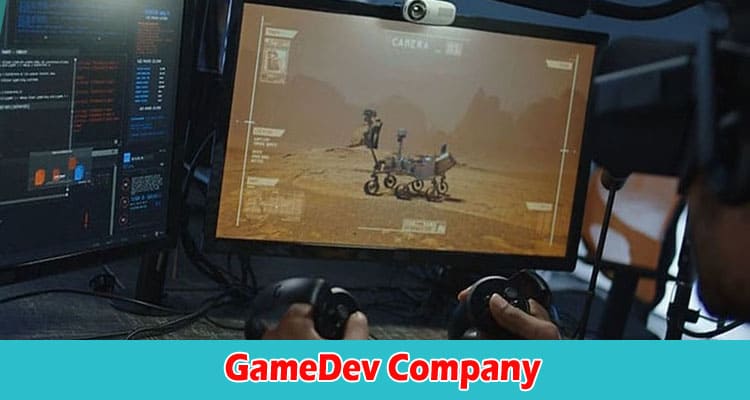Game development is an intricate dance of creativity, technology, and strategy, culminating in products that captivate millions. It’s not just about brilliant graphics or engaging gameplay; it’s about understanding the multifaceted stages, each essential to creating a successful game.
For stakeholders, an awareness of this lifecycle is pivotal for investments and expectations. For a game development company, it shapes its roadmap, guiding every decision. And for gamers, understanding this process enriches the gaming experience, providing a deeper appreciation of the journey behind every title they play.
Conceptualization & Pre-production
The birth of a game begins during this phase. Ideas emerge, inspired by market trends or a spark of creativity. These nascent thoughts mature into a Game Design Document (GDD) – a crucial blueprint that encapsulates the game’s soul and direction. It’s not just about the idea; it’s about its viability. The feasibility analysis delves deep, scrutinizing the technical aspects, weighing financial implications, and gauging market receptiveness. These elements ensure that a game doesn’t just remain a high concept but has the potential to resonate with players and achieve success.
Prototyping
Prototyping stands as the bridge between vision and reality in game development. It offers a tangible glimpse into gameplay mechanics and ideas, acting as an early proof-of-concept. These preliminary versions are about refining. The feedback loop that starts during this stage becomes a great help for developers, as it highlights strengths, uncovers flaws, and shapes the direction of development. This iterative process ensures that the final game aligns with the envisioned experience, minimizing risks and maximizing player engagement.
Production
The heart of game creation lies in its production phase. Storytelling and design breathe life into the game: vivid characters, immersive environments, and intuitive UI/UX interfaces all merge to form the visual tapestry. Coding and development are the backbone, defining game mechanics, choosing the right engine, and integrating diverse assets. But what’s a game without its auditory soul? Sound design crafts the ambiance, from haunting scores to impactful sound effects and captivating voice-overs. Yet, perfection is a journey, and playtesting navigates this path, iteratively refining the game, squashing bugs, and fine-tuning for the ultimate player experience.
Alpha & Beta Testing
Alpha and beta Testing are critical checkpoints in a game’s journey to public release. While the alpha stage is an in-house exploration, focusing on internal functionalities and identifying major bugs, beta testing throws the game into a wider arena, letting select users provide real-world feedback. These users identify nuances that might have been overlooked internally. Both stages serve distinct purposes but share a common thread: feedback. Every piece of criticism, every suggestion, is a step towards refinement.
Finalization and Launch
As the game nears its public debut, the finalization phase kicks in. Quality assurance (QA) teams delve deep, meticulously hunting for bugs and ensuring the gameplay shines at its best. But a game’s success isn’t just about its build but the buzz. Marketing and promotion amplify anticipation, using trailers, demos, and a barrage of promotional tactics to stoke gamer excitement. Finally, the release strategy comes into play. Whether it’s a grand, full-fledged launch, a staggered release, or an early access tease, the approach is tailored to maximize impact and cater to eager players’ expectations worldwide.
Post-launch & Support
Once the game is live, the journey doesn’t end; it merely evolves. Immediate post-launch phases often witness patches and updates, swiftly addressing unforeseen issues or enhancing game experiences. Developers roll out DLCs and expansions to sustain player interest, adding layers to the narrative or gameplay. However, a game’s soul is its community. Development companies play a pivotal role in fostering this community, engaging in dialogues, addressing feedback, and celebrating shared victories. This symbiotic relationship ensures the game remains alive, relevant, and cherished long after its debut.
Iteration or Sequel Development
The endgame frequently paves the way for a new beginning in the gaming world. Armed with player feedback and insights from the initial release, developers face a crossroads: iterate upon the existing masterpiece or embark on a sequel’s adventure. This decision combines market analysis, player demand, and creative passion. Sometimes, refining and expanding the current universe is the call, enriching the player’s connection. Other times, the lure of a fresh narrative or innovative mechanics beckons a sequel.
In Conclusion
Grasping the intricate lifecycle of game development is crucial for anyone vested in this industry, be it developers, stakeholders, or avid gamers. This journey is marked by constant dynamism, demanding adaptability at each phase, ensuring the final product resonates with players. As technology surges forward and market preferences evolve, so does the art and science of game creation. It’s a realm where innovation meets tradition, where lessons from the past shape visions of the future. In this constantly changing landscape, one thing remains constant: the pursuit of crafting immersive experiences that captivate and inspire.







